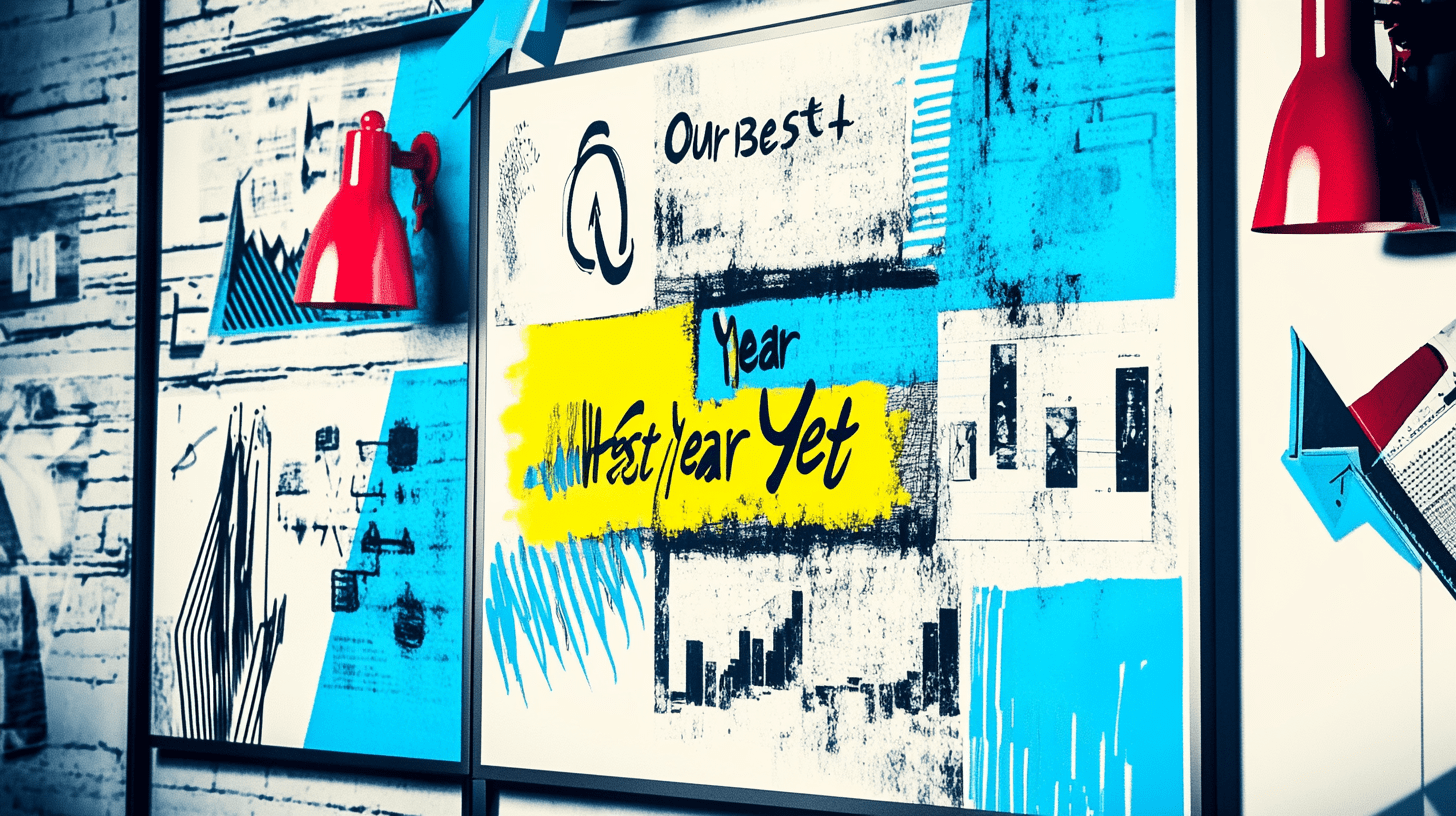Did you know 100% of procurement leaders agree that price cuts through sourcing and negotiations save the most money? In 2024, KPIs for purchasing are more than just saving money—they’re about finding value. Metrics like Spend Under Management (SUM) and Procurement ROI are key. They aim for 80% of spend under control and measure savings against costs.
Big businesses lose $400 per invoice due to inefficiencies. This shows the importance of making smart choices. This article will show you how to use data to make better decisions.
Important KPIs for purchasing include supplier defect rates, inventory turnover, and cycle time. But why do leaders focus so much on price cuts? KPIs don’t just track—they change things. Today, metrics also consider ethics and efficiency, like reducing CO2 emissions and tracking minority-owned suppliers.
Let’s see how your team can avoid common pitfalls and create a better procurement strategy.
Key Takeaways
- 100% of procurement leaders cite price reductions as top cost-saving levers via KPI tracking.
- Top performers aim for 80% of spend under management to reduce risk and boost visibility.
- Procurement ROI compares annual savings to costs, proving procurement’s financial impact.
- Emergency purchases cost businesses: track the ratio of urgent orders to total orders.
- 2024 shifts focus from cost-cutting to value creation through KPIs like supplier diversity metrics.
Understanding the Importance of KPIs in Purchasing
Procurement teams face many challenges every day. They need to balance costs, efficiency, and relationships with suppliers. How to measure purchasing performance is key. KPIs for procurement guide decisions to meet business goals. Let’s explore their role in today’s operations.
What Are KPIs?
Key Performance Indicators (KPIs) are measurable values that show how well a company is doing. For procurement, they turn vague goals like “save money” into clear targets. Examples include purchase order cycle time or supplier compliance rates. Think of KPIs as your dashboard: they track speed, cost, and reliability to show where to improve.
Why KPIs Matter for Purchasing
Without KPIs, procurement teams are in the dark. Consider this:
“A 15% cost reduction in supplier contracts can boost annual savings by hundreds of thousands.”
KPIs bring clarity:
| KPI | Formula | Purpose |
|---|---|---|
| Supplier Compliance Rate | (Total – Non-compliances)/Total × 100% | Tracks adherence to contractual terms |
| Defect Rate | (Defects / Output Tested) × 100% | Highlights quality issues in vendor deliveries |
Key Benefits of Effective KPIs
Effective KPIs bring real benefits:
- Cost Savings: Zluri’s work with MoEngage cut $250k in 5 months using targeted KPIs.
- Risk Mitigation: Metrics like supplier lead time expose delays before they disrupt operations.
- Strategic Alignment: Aligning KPIs with company goals ensures procurement drives growth, not just cost-cutting.
Remember, KPIs are more than numbers—they’re a roadmap to smarter decisions. Start by identifying which metrics matter most to your business. Then, track them regularly. The results? More than just savings—they’re sustainable success.
Common Purchasing KPIs to Track
Effective procurement strategies rely on tracking the right procurement metrics. These purchasing kpi examples turn data into actionable insights. They ensure every dollar spent aligns with business goals.
Cost Savings as a KPI
Hard savings—direct cost reductions from negotiations or contracts—are foundational. For instance, reducing material costs by 5% across $2M in annual spend saves $100,000. Procurement metrics like cost-per-item or procurement cost avoidance (preventing future expenses) reveal where to focus.
Purchase Order Accuracy
Mistakes in purchase orders cost time and money. Accuracy is calculated as:
(Accurate Orders ÷ Total Orders) × 100%. Aim for 98%+ accuracy. A single misdelivered item can delay production—so precision matters.
Supplier Lead Time
Supplier lead time measures how fast vendors deliver. Short lead times (≤4 days) reduce delays. For example, a 2-day reduction in lead time can slash emergency purchases by 15%. Track this to avoid bottlenecks.
Inventory Turnover Rate
Inventory turnover (Cost of Goods Sold ÷ Average Inventory) shows how quickly stock sells. A high ratio (e.g., 8x annually) means efficient stock management. Low turnover? It might signal overstocking or outdated items.
“72% of procurement leaders prioritize total cost of ownership to drive savings,” says a 2023 industry report. This reflects a shift toward holistic purchasing kpi examples that go beyond upfront costs.
These metrics work together. For example, improving supplier lead times can lower emergency purchases, boosting inventory turnover. Start by auditing current processes—small tweaks in these areas can yield big results. After all, data isn’t just numbers; it’s your roadmap to smarter spending.
Financial KPIs in Purchasing
Financial procurement metrics guide procurement to boost profits. Let’s look at three key KPIs that turn data into useful plans:
Total Cost of Ownership (TCO)
TCO is more than just the initial cost. It includes upkeep, training, and disposal costs. For instance, a company might save $5,000 on a machine but spend $10,000 a year on repairs. Procurement KPI benchmarks highlight leaders who manage TCO well, finding hidden savings. A manufacturing firm cut TCO by 15% by bettering vendor deals.
Return on Investment (ROI)
ROI shows the value gained versus costs. The formula is: (Net benefits – costs)/costs × 100%. A tech company got a 300% ROI by getting discounts for bulk purchases. Aim for a $10 return for every $1 spent. This metric proves procurement’s value to stakeholders.
Payment Terms and Discounts
- Early payment discounts (e.g., 2/10 net 30) can free up cash flow.
- Extending payment terms to 60 days can boost liquidity by 20%.
- Watch average days payable outstanding (DPO) to see working capital efficiency.
“A 1% improvement in payment terms optimization equals millions in savings for Fortune 500 companies.” – Procurement Analytics Report 2023
These metrics are more than numbers—they’re paths to success. Use them to get better deals, cut costs, and make procurement a profit maker. Remember, a 5% TCO cut can save millions annually. Start making smarter choices today.
Operational KPIs to Consider
Operational KPIs are key to tracking purchasing efficiency. They make sure daily tasks in procurement go well. These metrics show where we can save money, improve with suppliers, and avoid legal issues. Let’s look at three important areas to watch:
Order Fulfillment Cycle Time
Check how long it takes from when a purchase is approved to when it’s paid for. If it’s under 10 days, things are moving fast. But if it’s over 20 days, there might be problems. Using automated workflows can make this process quicker, saving money faster.
Supplier Performance Evaluation
Use scorecards to judge how well suppliers do. Look at how on time they are, how many mistakes they make, and how quick they respond. If a supplier scores less than 70% on being on time, it’s time to talk about new terms or find someone else. Visual dashboards help see how suppliers are doing over time.
Compliance Rate with Contracts
Keep an eye on how well you stick to contract terms like prices or service levels. Even a small drop in following these rules can lead to big penalties. Regular checks and using contract management software help teams stay on track with the law.
“A 5% reduction in cycle time can increase annual savings by $150k+ for mid-sized businesses.” – Procurement Analytics 2023
These metrics work together. Faster cycle times mean more money in your pocket, and good supplier scores mean fewer problems. Combining data insights with feedback from different teams helps keep getting better.
Strategic KPIs for Long-Term Success
Strategic KPIs make procurement a key driver of innovation, not just cost control. Let’s look at three metrics that future-proof your operations with purchasing analytics and KPIs for procurement.
Spend Analysis: Beyond the Ledger
Begin by tracking every dollar spent. Look at spend under management (SUM) to find unexpected purchases. Tools like Coupa or Ariba can uncover hidden savings. For example, one Fortune 500 company saved $12M a year by reducing suppliers.
Use this data to:
- Identify category spend patterns
- Optimize contracts with top suppliers
- Anticipate market shifts via spend trends
Supplier Diversity Tracking
Companies like Dell and Walmart prove diversity boosts innovation. Track metrics like:
| Category | Target | 2023 Industry Average |
|---|---|---|
| Minority-owned suppliers | 15-20% | 9% |
| Women-led vendors | 10-15% | 6% |
Every 1% increase in diverse suppliers leads to 0.8% revenue growth (McKinsey, 2023).
Risk Assessment Metrics
Use heat maps to see risks like supply chain disruptions. Key indicators include:
- Supplier concentration: Avoid over-reliance on top 5 vendors
- Geographic exposure: Map supplier locations vs. geopolitical risks
- Financial stability scores
Pro Tip: Pair with scenario modeling tools like Gartner’s Risk IQ for predictive insights.
These metrics don’t just report—they forecast. Start small: pick one area to audit quarterly. Remember, even Fortune 500 firms began with a single KPI dashboard.
Developing a KPI Framework for Your Organization
Creating a KPI framework is like solving a puzzle. Each piece must fit your business perfectly. Start with the SMART criteria: Specific, Measurable, Achievable, Relevant, Time-bound. For example, a SMART goal could be: “Reduce supplier lead times by 15% in Q3 through process automation.” This makes vague goals clear and actionable.
Setting SMART Goals
Use the Balanced Scorecard Institute’s MPRA framework. It pairs Measure-Perform-Review-Adapt cycles. For instance, track savings KPI by comparing actual prices to benchmarks. Don’t get stuck in too many metrics—keep it to 3-5. Tools like Procurement ROI show efficiency gains without overwhelming teams.
Aligning KPIs with Business Objectives
Make sure each KPI aligns with your company’s goals. If cost efficiency is key, track cost avoidance or contract compliance. For innovation, focus on supplier diversity percentage or number of new vendor partnerships. For example, a retail chain aiming for sustainability might measure recyclable packaging procurement rates.
Monitoring and Reporting Procedures
Adopt a “no surprises” approach. Use dashboards to track metrics like spend under management or maverick spend. Review quarterly, using traffic lights to highlight issues early. Keep reports simple and focused on insights. Use data to tell stories, like: “Supplier X’s 20% late delivery rate this quarter cost us $12K in overtime.”
“The best KPIs are like good coffee: they wake up the team without over-caffeinating them.”
Remember, frameworks change over time. Review KPIs annually to ensure they’re effective. The goal is to turn numbers into stories that guide decisions, not just decorate reports.
Tools and Software for Tracking Purchasing KPIs
Today’s procurement teams use special tools for purchasing analytics and to track tracking purchasing efficiency. The right tech turns data into plans that meet strategic goals.
Procurement Management Software
Platforms like Geckoboard and Salesforce make data collection easy and connect workflows. They offer:
- Centralized dashboards for real-time cost tracking and vendor performance
- Automated alerts for delays or budget overruns
- Integration with ERP systems to reduce manual entry errors
Data Analytics and Visualization Tools
Tools like Tableau and Grow make purchasing analytics easier with:
- Customizable BI dashboards for spend analysis and trend spotting
- Real-time data blending from multiple sources
- Prediction modeling to forecast supplier performance
“Companies that monitor KPIs are almost twice as likely to hit growth targets.” – Industry benchmark report
Real-Time Reporting Solutions
Solutions like Scoro and Asana help track tracking purchasing efficiency with:
- Live updates on order status and delivery timelines
- Automated reports for compliance audits
- Mobile access to KPIs during team meetings
Tools like SimpleKPI and Datapine offer prebuilt metrics to save time. Choose platforms with API integrations to avoid data silos. With the procurement as-a-service market growing at 6.4% annually, investing in scalable tech keeps teams competitive.
Challenges in Measuring Purchasing KPIs
Setting up key performance indicators for purchasing faces real challenges. Issues like data accuracy, resistance to change, and team engagement can slow things down. Here are ways to overcome these obstacles:
Data Integrity Issues
Problems with data sources and human mistakes can mess up improving purchasing processes. For instance, wrong supplier data can make cost savings look better than they are. To fix this, consider:
- Automating data entry to cut down on errors
- Regular checks on supplier databases
- Using tools like Precoro to bring all procurement data together
Resistance to Change in Organizations
Teams that prefer the old ways can hold back progress. A purchasing KPI effort failed because a manager said, “Our spreadsheets are just fine—thanks, but no thanks.” To overcome this, try:
- Being clear about how KPIs help
- Starting small with pilot programs to show benefits
- Training on new tools like Procurement’s automated reports
Ensuring Team Buy-In
A 2023 Supplier.io report showed that mid-size companies only meet 50% of their supplier diversity goals. To get teams on board, consider:
| Strategy | Action |
|---|---|
| RACI Matrix | Assign roles (Responsible, Accountable, Consulted, Informed) for KPI tracking |
| Incentives | Link KPI performance to bonuses or recognition programs |
For example, a tech company increased compliance by 30% by linking team bonuses to reducing supplier defects.
Best Practices for Implementing Purchasing KPIs
Implementing KPIs is an ongoing task, like gardening. It requires regular care to flourish. Here’s how to keep them healthy for the best results:
Regular Review and Adaptation
Procurement KPIs change with the market. Review them every quarter to see if they’re on track. For example, if a supplier defect rate is high, it might be time to tweak quality checks.
Using SaaS platforms can help track changes over time. This ensures your KPIs stay up-to-date.
- Drop outdated metrics that no longer drive value.
- Compare performance against procurement KPI benchmarks from industry reports.
- Adjust targets when market conditions change—like rising raw material costs.
Involving Stakeholders
Procurement is a team effort. Get finance, operations, and suppliers involved in setting KPIs. Workshops help everyone understand and support these goals.
For example, aligning procurement ROI targets with departmental budgets helps everyone work together.
- Hold quarterly stakeholder meetings to address concerns.
- Use shared dashboards to visualize progress toward improving purchasing processes.
- Assign ownership of specific KPIs to departments for accountability.
Training and Development
Teams need to know how to use KPIs. Training should cover:
- Basics of calculating metrics like emergency purchase ratios
- Interpreting data visualizations from analytics tools
- Actionable steps when metrics like supplier lead time worsen
A well-trained team can turn data into smart decisions. Try gamified learning to make it fun. Remember, a 10% improvement in purchase order accuracy can save thousands.
Case Studies of Successful KPI Implementation
Let’s look at real examples of how KPIs made a difference. These stories show how using the right metrics can lead to big improvements.
Example 1: TechGrow’s Cost-Savingings Strategy
TechGrow, a tech company, was hit hard by rising material costs. They started using total cost of ownership (TCO) and ROI to find savings. By changing contracts and finding new suppliers, they saved 18% in a year.
This change let them invest more in research and development. They grew their customer base by 25%.
HealthFirst’s Supplier Collaboration
HealthFirst, a healthcare provider, had trouble with supply delivery. They focused on getting orders on time and reducing defects. They aimed for 100% on-time delivery.
In six months, patient wait times went down by 20%. Their procurement lead said, “Supplier partnerships now feel like teamwork, not transactions.”
Their defect rate went from 8% to 1.2%, showing the power of good metrics.
Build-It-Right’s Process Overhaul
Build-It-Right, a construction company, used to measure success by projects finished. But, this led to 30% of work needing redoing. They started tracking procurement cycle time and vendor defects.
By focusing on quality, they cut errors by 40% and emergency buys by 50%. This made projects 15% faster and clients happier by 25%.
These stories show a key point: good procurement metrics lead to success. They help make better decisions and achieve results.
Conclusion: The Future of Purchasing KPIs
Procurement strategies will increasingly rely on purchasing analytics to turn raw data into actionable insights. As businesses prioritize tracking purchasing efficiency, emerging tools will bridge gaps between traditional metrics and forward-thinking performance indicators.
Trends to Watch in Purchasing Analytics
Predictive analytics will dominate procurement strategies, forecasting market shifts and supplier risks. Sustainability metrics, like carbon footprint tracking and ethical sourcing compliance, are becoming mandatory for competitive edge. Companies like Unilever and Walmart already embed these into KPI frameworks, proving their business value.
The Role of Automation and AI
Automation tools streamline data collection, while AI detects inefficiencies in real time. Machine learning models will refine supplier evaluations, optimizing cost savings and reducing manual errors. Imagine algorithms predicting lead times better than spreadsheets—this shift is already underway in tech-driven industries like automotive and healthcare.
Final Thoughts on Continuous Improvement
Procurement success hinges on adaptability. Treat KPIs like a fitness tracker: monitor them regularly, adjust goals, and celebrate small wins. Think of procurement teams as the unsung data scientists of the enterprise—curating insights that fuel growth. With the right tools and mindset, even a 1% improvement in supplier lead times or a 5% cost reduction can redefine operational excellence. Stay curious, stay analytical, and remember: procurement is where strategy meets reality.




